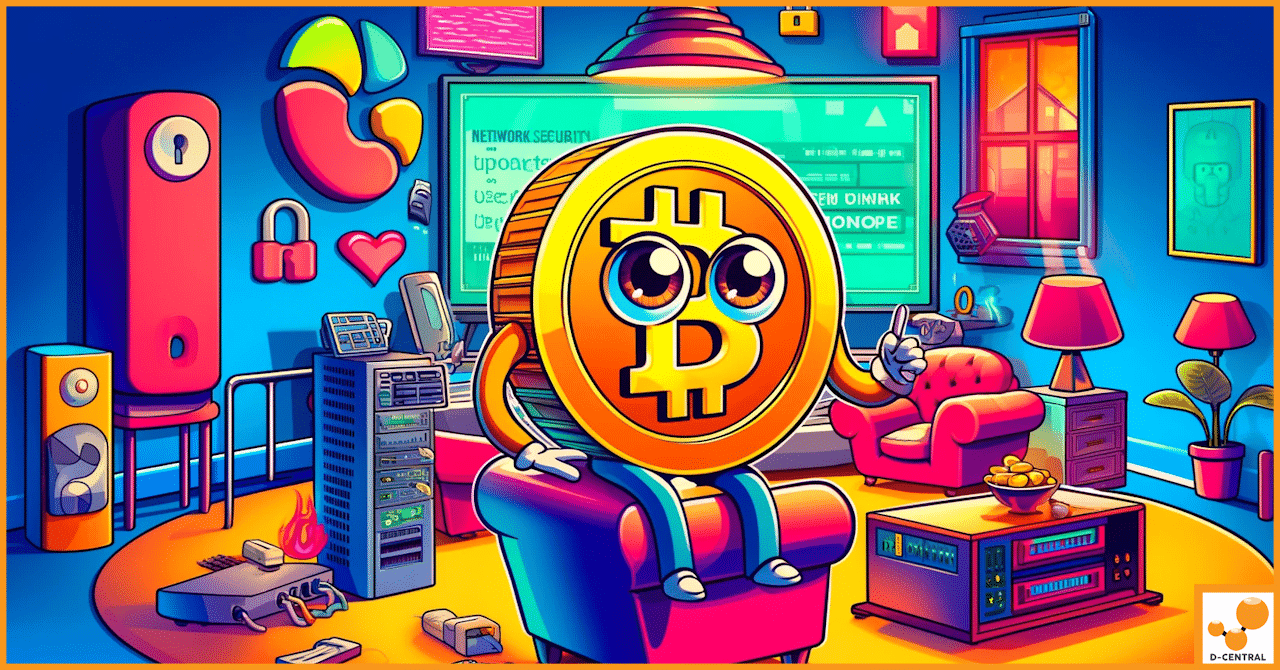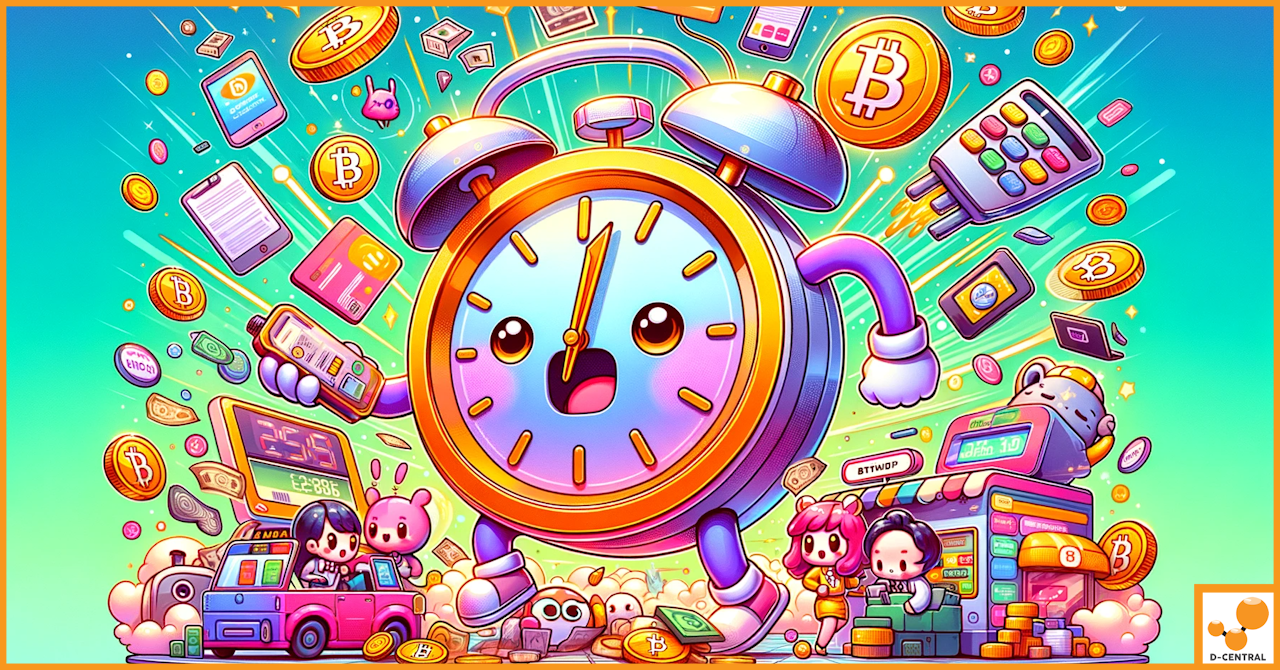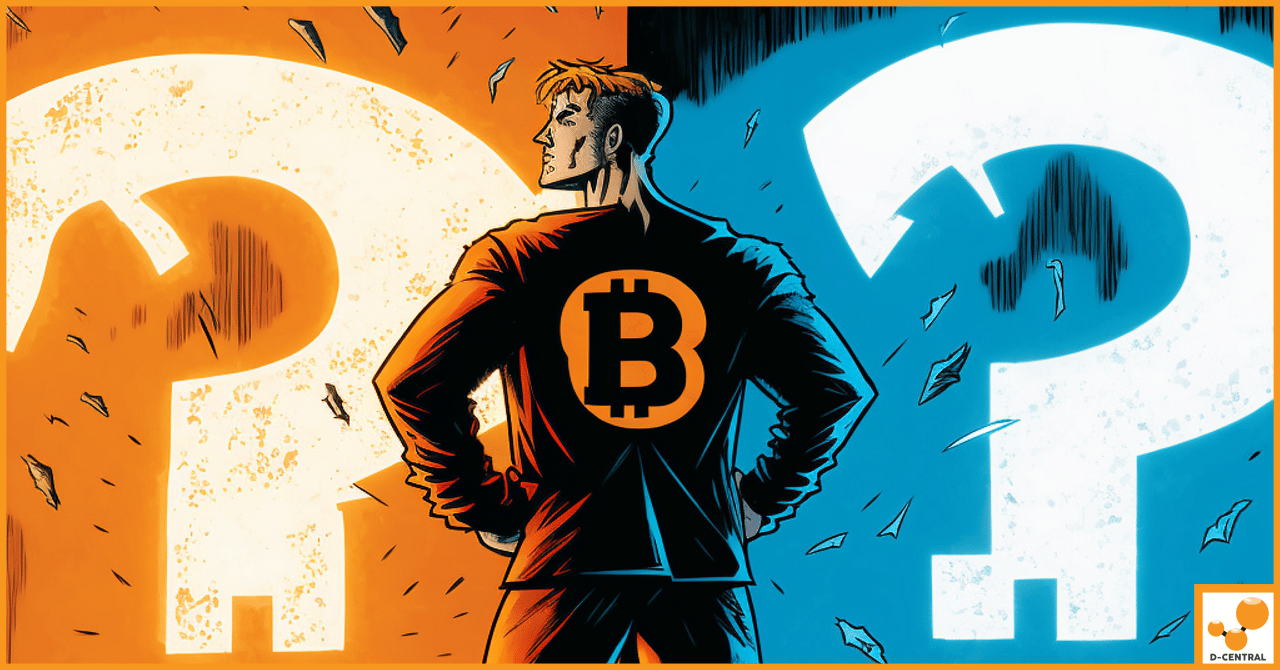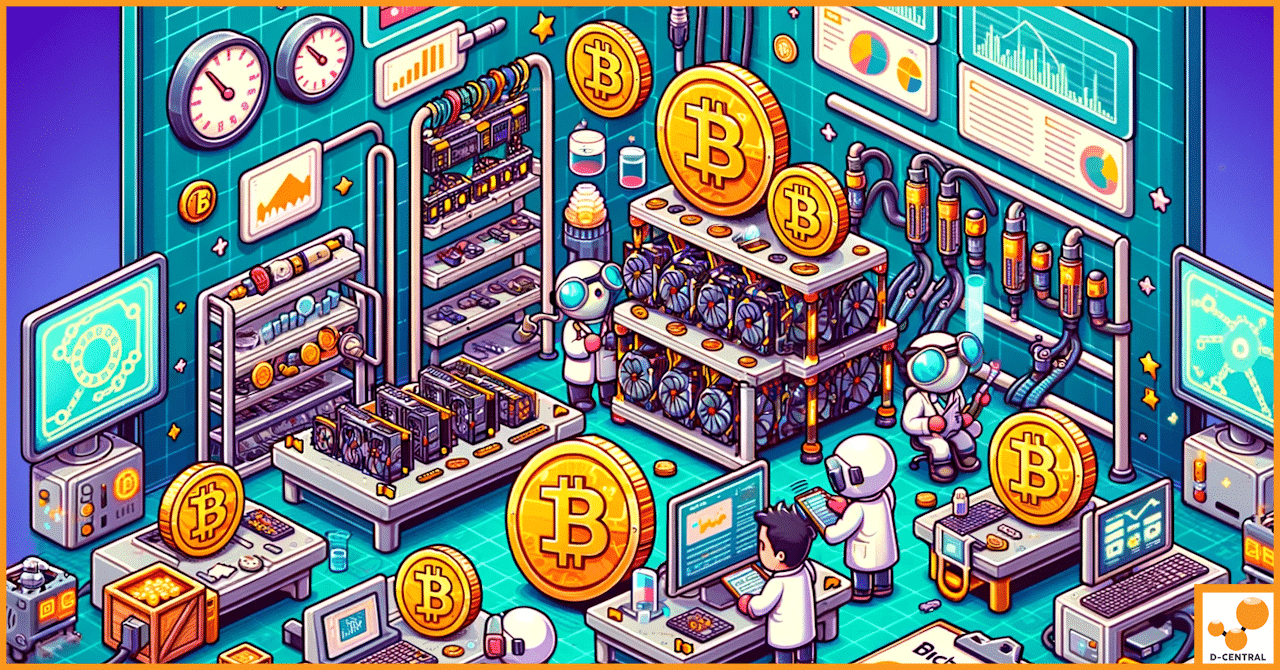
Understanding the Basics of Home Network Security for Bitcoin Mining
Welcome to the world of home Bitcoin mining! As cryptocurrency enthusiasts increasingly turn to home-based mining operations, it’s crucial to
4479 Desserte Nord Autoroute 440, Laval, QC H7P 6E2

Bitcoin, since its inception in 2009, has revolutionized the concept of currency and paved the way for a plethora of digital currencies. Initially conceived as a peer-to-peer electronic cash system by its enigmatic creator, Satoshi Nakamoto, Bitcoin has grown to become much more than just a digital currency. It is now seen as a store of value, an investment asset, and a symbol of the decentralized finance movement. However, its journey has been marked by debates and discussions about its practicality and efficiency, especially in the realm of transaction speed and scalability.
As we delve into this article, our focus will be on two critical aspects of Bitcoin that continue to shape its acceptance and usage worldwide. First, we will assess the transaction speed of Bitcoin, a crucial factor that determines its feasibility as a day-to-day payment method. Slow transaction speeds have often been cited as a significant bottleneck, potentially hindering Bitcoin’s widespread adoption as a digital currency for everyday transactions. Second, we will explore Bitcoin’s potential as a payment processor. This involves understanding the underlying technology, the challenges it faces, and the innovations that are being developed to enhance its performance.
Bitcoin operates on a decentralized ledger known as the blockchain. Each transaction made with Bitcoin is broadcast to a network of nodes, which are computers participating in the Bitcoin network. These transactions are then grouped together into a ‘block’.
The process of block generation is at the heart of Bitcoin’s transaction mechanics. This is where miners come into play. Miners use powerful computers to solve complex mathematical puzzles. The first miner to solve the puzzle gets the right to add the new block of transactions to the blockchain. This process, known as ‘proof of work’, not only adds transactions to the ledger but also creates new bitcoins as a reward to the miner, known as the block reward.
The transaction speed of Bitcoin is often measured in transactions per second (TPS). As of now, Bitcoin can process about 4-7 transactions per second. This speed is relatively slow, especially when compared to traditional payment systems. For instance, Visa, a global leader in digital payments, can handle over 24,000 transactions per second. This stark difference is often highlighted as a significant limitation for Bitcoin in becoming a widely accepted form of payment for everyday transactions.
Several factors contribute to the transaction speed of Bitcoin:
These factors combined make Bitcoin’s transaction speed a complex issue. While the current speed may be sufficient for some applications, it poses challenges for others, especially those requiring quick confirmation times. As Bitcoin continues to evolve, finding solutions to enhance its transaction speed while maintaining its decentralized and secure nature remains a key focus for developers and the community at large.
Scalability is a critical issue for Bitcoin and has been a topic of intense discussion within the cryptocurrency community. Scalability, in the context of Bitcoin, refers to the network’s ability to handle a large number of transactions both quickly and efficiently. As Bitcoin has grown in popularity, its scalability limitations have become more apparent, leading to debates and developments aimed at addressing these challenges.
The primary scalability issue for Bitcoin revolves around its block size and block generation time. The 1 MB limit on block size and the average 10-minute interval for block generation inherently restrict the number of transactions that can be processed per second. This limitation leads to slower transaction times and higher transaction fees, especially during periods of high network congestion.
When compared to other cryptocurrencies, Bitcoin’s scalability issues become more evident. For instance, cryptocurrencies like Ethereum and Ripple were designed with different underlying architectures that allow for faster transaction speeds. Ethereum, with its smart contract capabilities, processes transactions faster than Bitcoin, though it also faces its scalability challenges. Ripple, on the other hand, is known for its exceptionally high transaction speed, capable of handling 1,500 transactions per second, making it a more viable option for real-time global payments.
These differences in scalability are primarily due to the varying approaches to blockchain technology and consensus mechanisms used by these cryptocurrencies. While Bitcoin prioritizes security and decentralization, other cryptocurrencies may sacrifice some of these aspects for higher scalability.
The scalability issues of Bitcoin significantly impact its utility as a payment processor. In its current state, Bitcoin struggles to serve as a practical medium for everyday transactions, such as buying coffee or groceries, where quick transaction confirmation is essential. The slow transaction speed and high fees during peak times make Bitcoin less attractive for both consumers and merchants in scenarios requiring immediate settlement.
Moreover, the scalability challenge affects Bitcoin’s ability to compete with established electronic payment systems like Visa or Mastercard, which can handle a massive volume of transactions swiftly. For Bitcoin to become a widely accepted payment processor, it needs to overcome these scalability hurdles without compromising its core principles of decentralization and security.
While Bitcoin’s design offers robust security and has pioneered the concept of decentralized digital currency, its scalability issues pose significant challenges in its evolution as a practical payment processor. Addressing these challenges requires innovative solutions that can enhance Bitcoin’s transaction capacity while preserving its fundamental attributes.
Layer 1 in the Bitcoin network refers to the underlying main blockchain architecture. This foundational layer is where all Bitcoin transactions are recorded and validated. It’s the core of Bitcoin’s decentralized ledger technology, ensuring that all transactions are securely and permanently stored. Layer 1 is synonymous with the Bitcoin blockchain itself, maintaining the entire history of Bitcoin transactions since its inception.
The primary role of Layer 1 is to serve as the settlement layer of the network. This involves three key aspects:
Despite its strengths, Layer 1 of the Bitcoin network faces significant challenges, particularly when it comes to handling high transaction volumes:
In summary, while Layer 1 of the Bitcoin network provides a secure and immutable ledger for transactions, its design presents challenges in scalability and transaction throughput. These limitations have led to the exploration and development of additional layers, like Layer 2 solutions, to enhance Bitcoin’s capacity as a transactional and payment processing platform.
Layer 2 solutions in the Bitcoin network are designed to address the scalability and speed limitations of Layer 1, the main blockchain. These solutions operate on top of the existing blockchain infrastructure, providing a secondary framework for transaction processing. The primary goal of Layer 2 is to enable faster and more efficient transactions, while still leveraging the security and decentralization of the underlying Layer 1 blockchain.
One of the most prominent Layer 2 solutions is the Lightning Network. This protocol facilitates off-chain transactions, meaning transactions occur outside the main blockchain but are still secured by it. Here’s how it works:
Other Layer 2 protocols include sidechains, state channels, and plasma chains, each with unique mechanisms for handling transactions off the main blockchain. These solutions vary in their approach but share the common goal of enhancing transaction speed and scalability.
Layer 2 solutions effectively address the scalability and speed issues inherent in Layer 1 of the Bitcoin network:
Layer 2 solutions are pivotal in enhancing Bitcoin’s transactional capabilities. They offer a promising approach to overcoming the scalability and speed challenges of Layer 1, paving the way for Bitcoin to become a more practical and widely-accepted payment processor.
At D-Central Technologies, we have closely observed and contributed to the evolution of Bitcoin, particularly in its journey towards becoming a viable payment system. Our perspective is rooted in a deep understanding of Bitcoin’s technological foundations and its potential for societal impact. We recognize that while Bitcoin’s journey began as a decentralized digital currency, its role has expanded significantly. It’s not just an asset; it’s a technological innovation with the potential to redefine financial transactions globally.
D-Central Technologies plays a pivotal role in the Bitcoin ecosystem, particularly through our expertise in mining and hardware solutions. We understand that efficient and effective mining is the backbone of the Bitcoin network, ensuring security, stability, and trust. Our contributions include:
Bitcoin mining is not just about creating new bitcoins; it’s integral to the network’s scalability and efficiency. Our perspective at D-Central Technologies is that effective mining operations contribute significantly to the overall health of the Bitcoin network. Here’s how:
In summary, D-Central Technologies is deeply invested in the growth and evolution of Bitcoin as a payment system. Our expertise in mining and hardware solutions not only contributes to the Bitcoin ecosystem but also supports the network’s journey towards improved scalability and efficiency, essential for its success as a global payment processor.
In this article, we have explored various facets of Bitcoin’s current state and its potential future as a payment processor. We began by examining the transaction speed of Bitcoin and how it compares to traditional payment systems like Visa. The inherent challenges in Bitcoin’s scalability, primarily due to its block size and block generation time, were highlighted, underscoring the limitations of Layer 1 – the main blockchain – in handling high transaction volumes.
We then delved into the innovative solutions presented by Layer 2 protocols, with a special focus on the Lightning Network. These solutions are pivotal in addressing the scalability and speed issues of Layer 1, offering a pathway for Bitcoin to enhance its transactional capabilities significantly.
Bitcoin’s journey towards becoming a viable payment processor is ongoing and dynamic. While it faces challenges in scalability and transaction speed, the continuous developments in Layer 2 technologies are promising steps towards overcoming these hurdles. The evolution of Bitcoin is not just a technological endeavour but also a testament to the collaborative efforts of the global community striving to realize the full potential of this groundbreaking digital currency.
At D-Central Technologies, we are at the forefront of supporting Bitcoin’s growth and scalability through our specialized mining and hardware services. We encourage readers to delve into the world of Bitcoin mining, whether you are a seasoned miner or new to the field. Our range of services, from ASIC repairs to customized mining solutions, is designed to cater to diverse needs and contribute to the robustness of the Bitcoin network.
We invite you to visit D-Central Technologies to learn more about our services and how we are contributing to the Bitcoin ecosystem. Our expertise in ASIC repair and mining hosting is not just a business endeavour; it’s a commitment to the advancement of Bitcoin and its community.
What is Bitcoin’s current transaction speed?
Bitcoin can currently process about 4-7 transactions per second. This speed is slower compared to traditional payment systems like Visa, which can handle over 24,000 transactions per second.
What factors affect Bitcoin’s transaction speed?
Several factors affect Bitcoin’s transaction speed, including block size limit (1 MB currently), network congestion, and the block generation time, which is approximately every 10 minutes.
What are Layer 1 and Layer 2 in the context of Bitcoin?
Layer 1 refers to the underlying main blockchain technology of the Bitcoin network, which is secure but limited in transaction throughput. Layer 2 refers to solutions built on top of the Layer 1 blockchain to enhance transaction speed and scalability, such as the Lightning Network.
How do Layer 2 solutions improve Bitcoin’s transaction capabilities?
Layer 2 solutions like the Lightning Network enable off-chain transactions, processing them almost instantly and with minimal fees, and help to handle a much larger volume of transactions.
What is the role of D-Central Technologies in the Bitcoin ecosystem?
D-Central Technologies contributes significantly to the Bitcoin ecosystem through ASIC repairs, mining hosting services, and customized mining solutions, supporting the network’s scalability and efficiency.
Can Bitcoin serve as a practical medium for everyday transactions?
Currently, due to scalability challenges, Bitcoin struggles to serve as a practical medium for everyday transactions that require quick confirmation. Layer 2 solutions are being developed to address this limitation.
How can one learn more about Bitcoin mining and D-Central Technologies’ services?
You can visit D-Central Technologies’ website to learn more about their services, including ASIC repair and mining hosting. They offer services catering to both seasoned miners and newcomers to the field.
DISCLAIMER: D-Central Technologies and its associated content, including this blog, do not serve as financial advisors or official investment advisors. The insights and opinions shared here or by any guests featured in our content are provided purely for informational and educational purposes. Such communications should not be interpreted as financial, investment, legal, tax, or any form of specific advice. We are committed to advancing the knowledge and understanding of Bitcoin and its potential impact on society. However, we urge our community to proceed with caution and informed judgment in all related endeavors.
Related Posts

Welcome to the world of home Bitcoin mining! As cryptocurrency enthusiasts increasingly turn to home-based mining operations, it’s crucial to

In the ever-evolving landscape of cryptocurrency, ASIC (Application-Specific Integrated Circuit) mining has emerged as a cornerstone of digital currency extraction.

Cryptocurrency mining has emerged as a cornerstone of the digital currency ecosystem, powering the blockchain with every hash and transaction